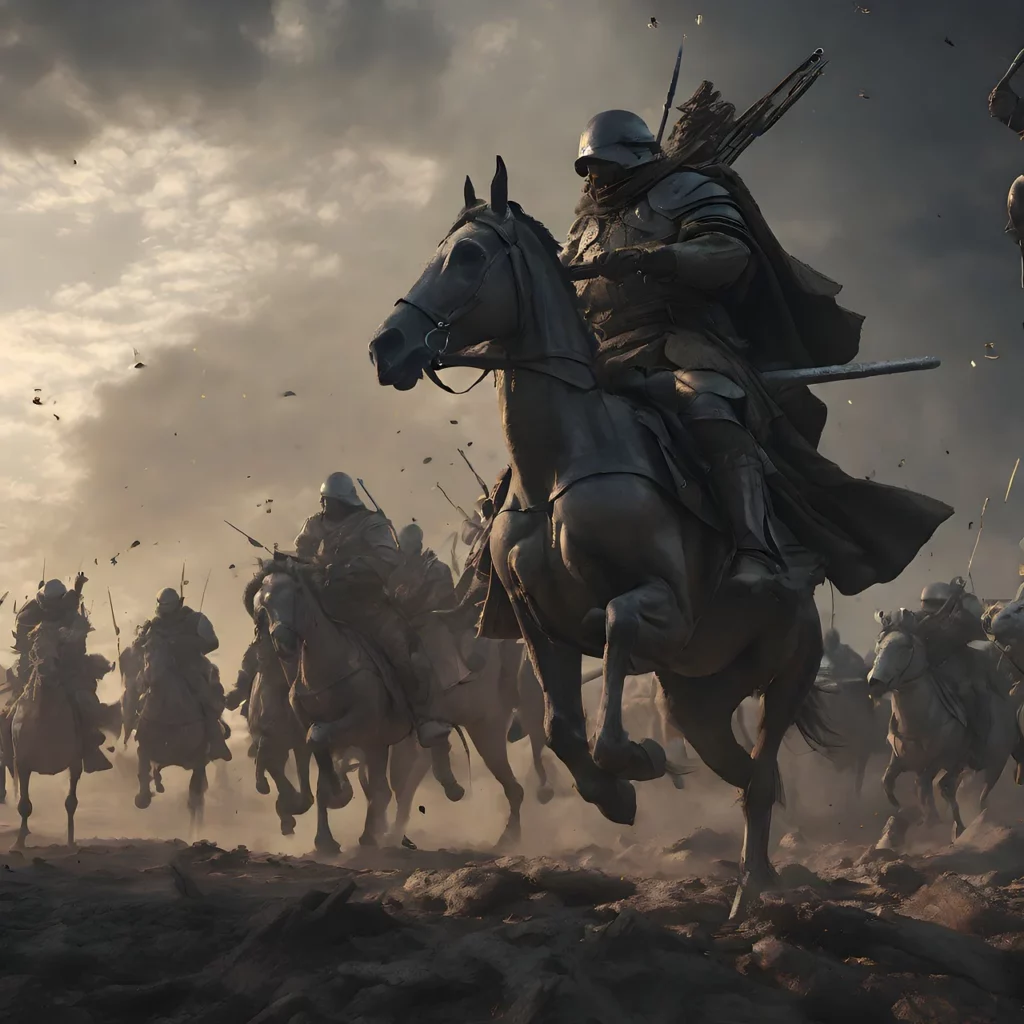Throughout history, artists have captured the intensity and drama of warfare on canvas. From glorifying victories to depicting the horrors of battle, war painters played a crucial role in shaping how people perceived historical conflicts. Many of these artists were eyewitnesses to the chaos of battle, while others worked from descriptions or their imagination to create vivid depictions of military confrontations.
In this article, we explore famous artists who specialized in battle scenes, highlighting their unique approaches, artistic techniques, and the impact of their work. These artists produced famous paintings of war that continue to influence the way we view history and conflict.
1. Peter Paul Rubens (1577–1640) – The Baroque Master of War
Peter Paul Rubens, one of the most celebrated painters of the Baroque era, created some of the most dramatic and emotionally intense battle paintings. His work was characterized by dynamic compositions, rich colors, and a sense of movement that brought battle scenes to life.
Notable War Paintings by Rubens
- The Consequences of War (1638–1639) – A symbolic depiction of the destruction caused by war, emphasizing its tragic consequences.
- The Battle of the Amazons (1615) – A chaotic and energetic portrayal of mythical female warriors in combat.
Rubens’ ability to depict the human form in motion and his skillful use of lighting made his battle scenes particularly striking. He often incorporated allegorical and mythological elements, blending historical conflict with deeper symbolic meanings.
2. Francisco Goya (1746–1828) – The Dark Reality of War
Unlike many artists who glorified battle, Francisco Goya focused on the brutality and suffering caused by war. His paintings and etchings offered unflinching depictions of the horrors of conflict, making him one of the first artists to adopt an anti-war stance in his work.
Notable War Paintings by Goya
- The Third of May 1808 (1814) – One of the most famous paintings of war, depicting the execution of Spanish rebels by Napoleonic troops. The raw emotion and stark contrast between light and dark make it a powerful anti-war statement.
- The Disasters of War (1810–1820) – A series of etchings that portray the gruesome realities of the Peninsular War, including famine, executions, and suffering civilians.
Goya’s approach to war art was groundbreaking, shifting away from romanticized battle scenes to focus on the suffering of the victims rather than the heroism of soldiers.
3. Eugène Delacroix (1798–1863) – Romanticism and the Heroism of War
As a leading figure of the Romantic movement, Eugène Delacroix brought passion, energy, and emotion to his battle paintings. His dynamic brushstrokes and use of bold colors created a sense of movement and intensity in his war scenes.
Notable War Paintings by Delacroix
- Liberty Leading the People (1830) – An iconic revolutionary painting that symbolizes the fight for freedom during the July Revolution in France.
- The Massacre at Chios (1824) – A haunting depiction of the suffering of Greek civilians at the hands of the Ottoman Empire during the Greek War of Independence.
Delacroix’s work often blurred the line between historical and allegorical, turning war into a dramatic and emotional spectacle rather than a straightforward historical record.
4. Vasily Vereshchagin (1842–1904) – The Brutal Truth of War
Russian artist Vasily Vereshchagin is renowned for his realistic and often shocking battle paintings. He traveled extensively, witnessing military campaigns firsthand, which allowed him to depict the horrors of war with striking authenticity.
Notable War Paintings by Vereshchagin
- The Apotheosis of War (1871) – A chilling depiction of a pyramid of human skulls, symbolizing the cost of conflict.
- The Defeated. Retire, Retire! (1880) – A harrowing image of soldiers retreating, wounded and broken by battle.
Vereshchagin’s refusal to glorify war and his focus on its devastating human toll set him apart from many of his contemporaries. His work was controversial, as it challenged romanticized views of military heroism.
5. Albrecht Altdorfer (1480–1538) – The Birth of Landscape Battle Paintings
Albrecht Altdorfer, a German Renaissance artist, is credited with pioneering the landscape battle painting. Unlike earlier artists who focused primarily on individual warriors, Altdorfer introduced wide, panoramic views of entire battles, creating a sense of scale and movement.
Notable War Paintings by Altdorfer
- The Battle of Alexander at Issus (1529) – One of the first large-scale battle paintings, showing thousands of soldiers engaged in combat against a dramatic mountainous backdrop.
Altdorfer’s work was revolutionary for its time, introducing new ways of depicting warfare by incorporating dramatic natural settings and aerial perspectives.
6. Jean-Louis-Ernest Meissonier (1815–1891) – Precision and Detail in Military Art
French artist Jean-Louis-Ernest Meissonier was known for his meticulous attention to detail in military paintings. His works often depicted Napoleonic battles, capturing the uniforms, weapons, and movements of soldiers with almost photographic accuracy.
Notable War Paintings by Meissonier
- Napoleon in 1814 (1862) – A somber depiction of Napoleon retreating after his failed Russian campaign.
- Friedland, 1807 (1875) – A highly detailed battle scene showcasing the grandeur and discipline of the French army.
Meissonier’s dedication to historical accuracy and his ability to paint small yet incredibly detailed battle scenes earned him great acclaim in military art.
Conclusion: The Lasting Impact of Battle Painters
From Baroque grandeur to Romantic heroism and stark realism, battle painters have played a significant role in shaping our understanding of war. While some artists glorified victories, others exposed the horrors of conflict, challenging traditional narratives of military history.
Their famous paintings of war serve as powerful visual records of the past, offering insights into not only the tactics and weapons of different eras but also the emotional and human aspects of war. Whether through sweeping battle landscapes, intimate portraits of soldiers, or graphic depictions of suffering, these artists brought war to life in ways that continue to resonate today.


